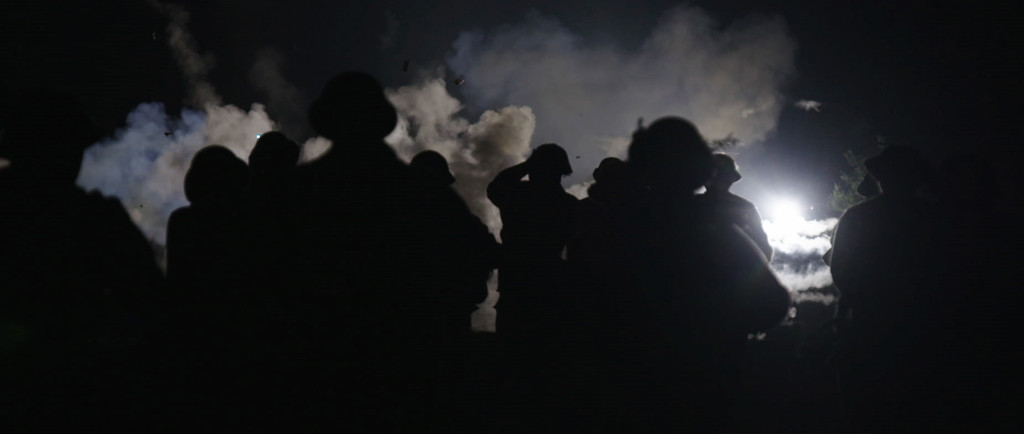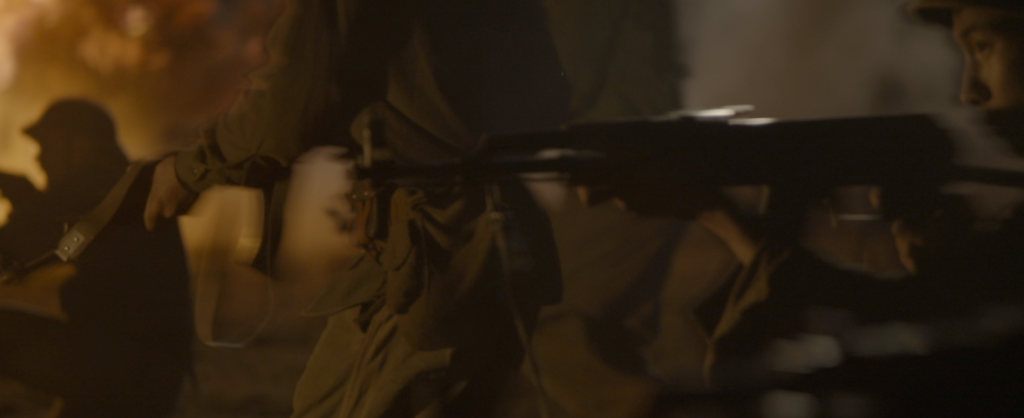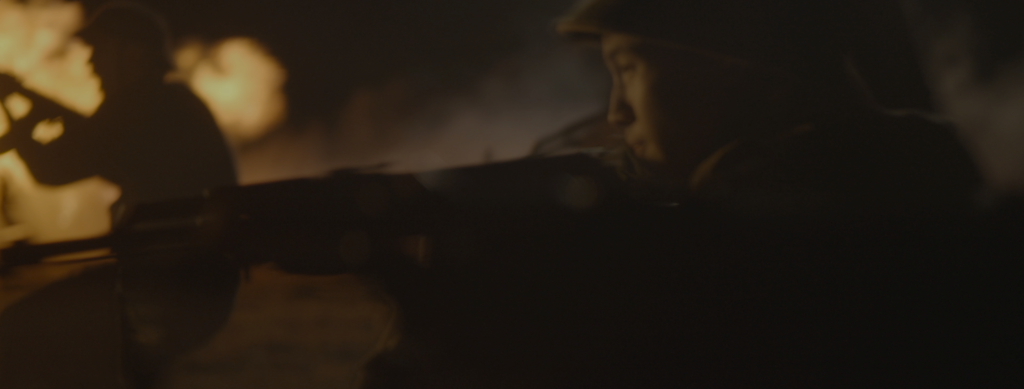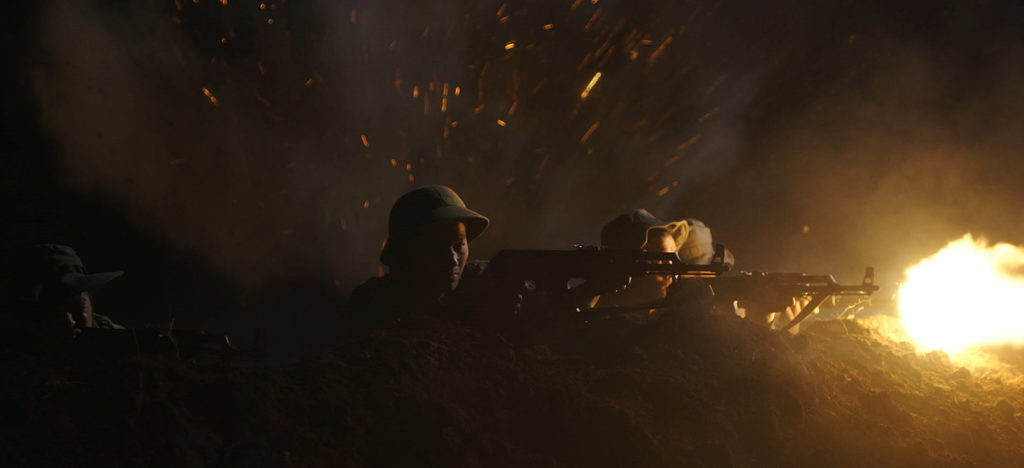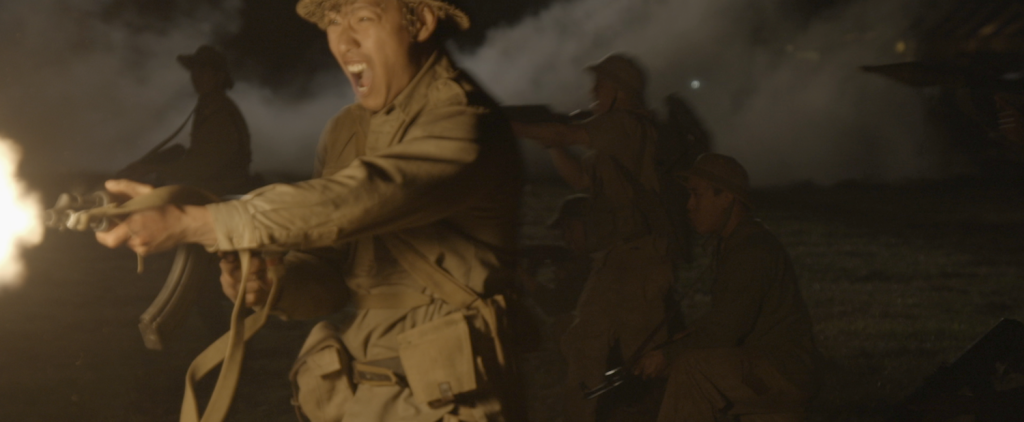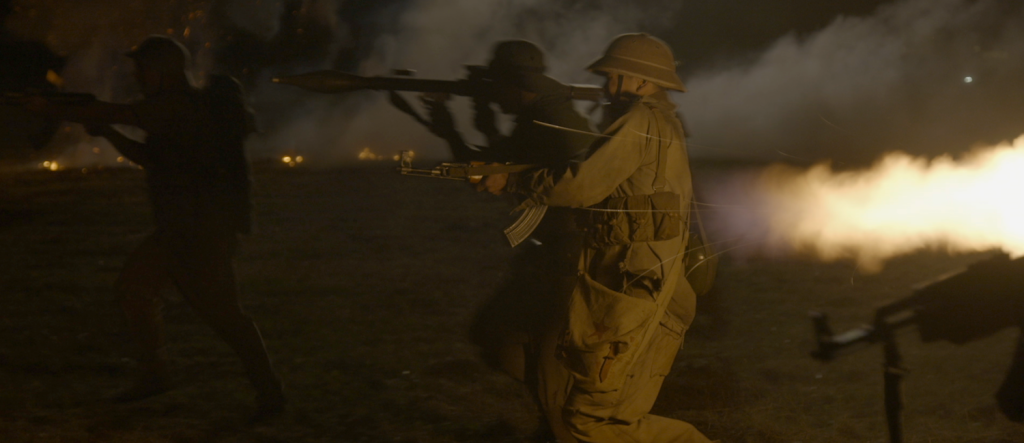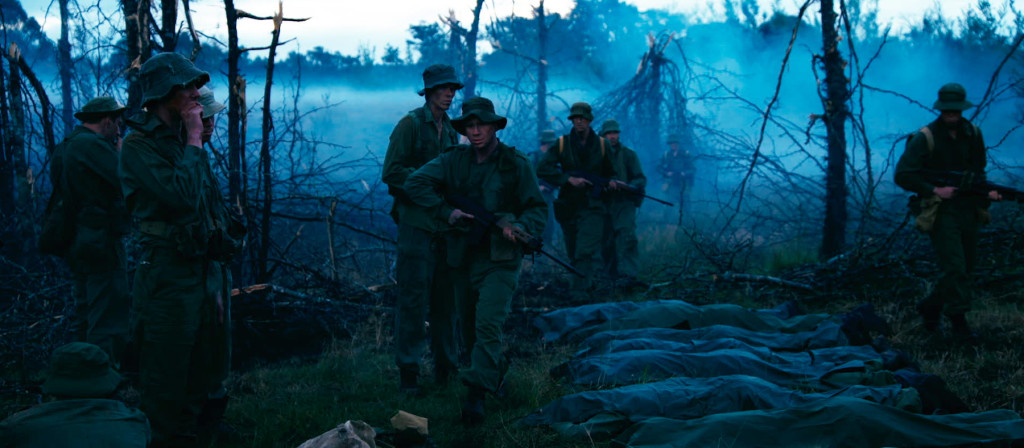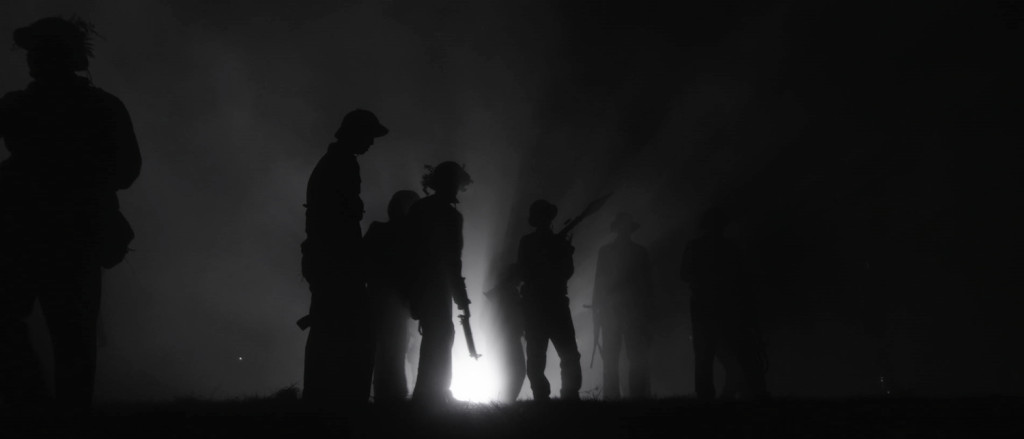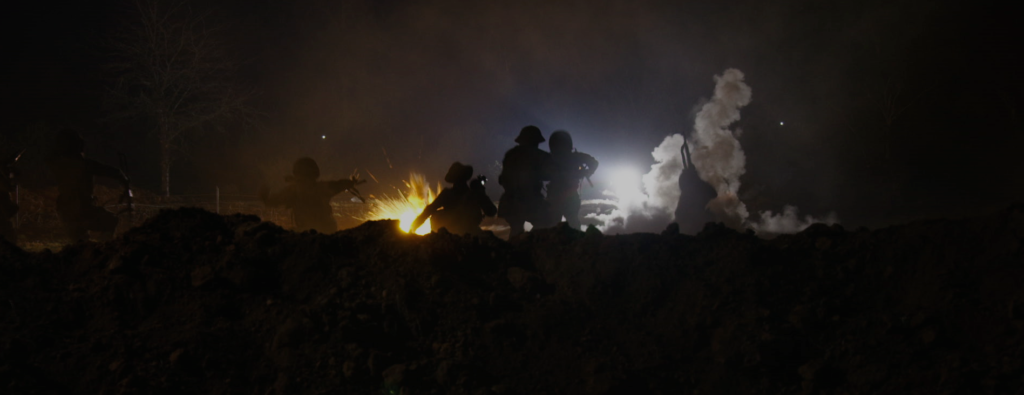I have had many questions regarding lighting for some of the dramatized battle re-enactment scenes in “The Crater”.
The lighting plan was simple, there were essentially no lights.
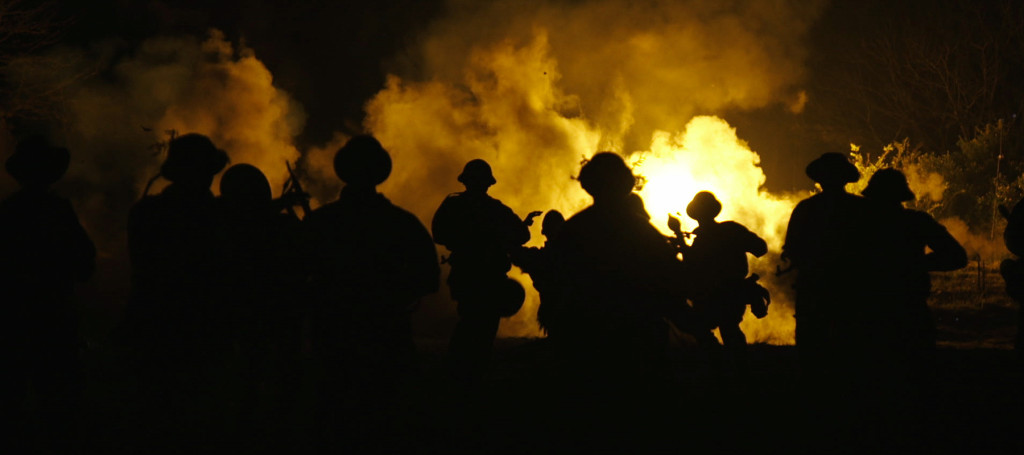
The concept called for very minimal lighting as Director, David Bradbury, wanted absolute realism and the nights of the battle, as described by the Vets who were there, “were pitch black, no moon, nothing, just black”. Helping keep to this plan was the fact this was being done on a vey tight budget so there was no financial room for condors with 12K’s, balloons, Musco, generators, etc. to light the huge battle field for the all night time battle scenes.

The lighting plan involved playing the battle in “layers”, lighting, at very low intensity, the background and then allowing flares, explosions and muzzle flash to light the middle ground and foreground with no additional supplemental foreground lighting.
Essentially everything played in silhouette unless “soldiers” were captured on camera during an explosion or muzzle flash.
Each sequence was staged by laying down smoke from explosive pots in the deep background. This was lit by the explosions themselves and by a single 5K backlighting the smoke at extremely low level. Next the explosions moved progressively towards camera laying more smoke and the middle ground and foreground was the charging troops and lots of muzzle flash. Essentially everything played in silhouette unless “soldiers” were captured on camera during an explosion or muzzle flash. The added benefit of this was no-one (particularly the camera operators) had any idea where anyone was except when there was light…..again, exactly as experienced by those who were there, and this, adding to the realism.
Ultimately the effect was to create as much disorientation and chaos as possible so nothing was evenly lit and only fleeting glimpses of the action were visible. Exactly as it was described by the Vets.
The day ext of the Aussie soldiers after the bombing was shot about 30 minutes after sunset with only ambient light. The scene in the command center using only 100W Tungsten bulbs dimmed to about 50% to get the warmth.
One lighting unit I was able to use was the searchlight mounted on the Centurion tank. These were used in an on/off fashion during the battle when the North Vietnamese soldiers were attacking. The actual light (part of the Centurion Tank) was a 1 million candlepower Xenon that was mounted just above the gun and provided some serious illumination on the battlefield. Of course during battle this light never remained on and was only used in occasional very brief bursts to locate the attacking soldiers causing momentary blindness and making them easy targets for the 50 caliber machine guns.
“The Crater” was screened in Australia on April 25th as part of the Anzac Day, Gallipoli Centenary Celebrations.
